Multimodal Interaction of MU Plant Landscape Design in Marine Urban Based on Computer Vision Technology
Abstract
1. Introduction
2. Basic Overview
2.1. Concept Introduction
- (1)
- Features of MU plant LD
- (2)
- CVT
- (3)
- Multimodal interaction
2.2. Literature Review at Home and Abroad
2.3. The Necessity of Combining the Characteristics of MC Plant LD, CVT, and Multimodal Interactive Design
- (1)
- Beneficial for designers to refine their design proposals. Through the use of 3D and virtual reality (VR) interactive technology, designers can observe their design proposals in multidimensional virtual environments. This benefits them in conducting further analysis, deduction, and refinement of their design works, enabling them to promptly identify issues and reduce design flaws.
- (2)
- Beneficial for presenting design proposals. Multimodal interactive technology has brought about a revolution in the field of landscape design representation. Viewers can not only intuitively experience the effects of the scene after construction, but also obtain more information from the scene through human–computer interaction, achieving information interaction. Moreover, virtual reality (VR) interactive technology supports demonstrations on both computers and mobile devices, greatly expanding the channels for presenting and communicating design proposals.
- (3)
- Beneficial for communication between designers and decision makers. Through the use of computer VR multimodal interactive technology, property owners can view design proposals from multiple angles in virtual scenes according to their preferences, experience the site environment firsthand, and intuitively understand the designer’s design intentions. This is something that cannot be achieved with renderings, sand table models, or animations. After fully understanding the design intentions, property owners can communicate and negotiate more effectively with designers, and their opinions are also more targeted.
2.4. MU LD Based on Multimodal Interaction
- (1)
- Interactive water body LD
- (2)
- Interactive landscape facilities design
- (3)
- Interactive plant LD
3. Case Design of Coastal Plants in Sanya Bay, China
3.1. Assessment and Analysis of Marine Eco-Economic Zoning in Sanya Region
3.1.1. Analysis of Spatial Heterogeneity
3.1.2. Data Source
3.2. Case Study of Coastal Plants in Sanya Bay—Anaya Community
3.2.1. Design Ideas
3.2.2. Functional Zoning Design Based on Tourists’ Needs
- (1)
- Entrance landscape area
- (2)
- Viewing tour area
- (3)
- Water-friendly landscape area
- (4)
- Quiet rest area
3.2.3. Five-View Plant System
- Visual effect
- Auditory effect
- Smell effect
- Gustatory effect
- Tactile effect
4. Evaluation of the Interactional Impact between CVT, MC Planting, and MID
4.1. Respondents’ Occupational Distribution
4.2. Evaluation Analysis of the Effect of Computer Vision-Based MID
4.3. Attitudes toward the Expression of Computer Vision-Based Multimodal Interactive Design
4.4. Interactivity throughout the Design Process
4.5. Data Result Analysis
- (1)
- Using willingness analysis
- (2)
- Expectations for the future application of VR multimodal interaction technology
- (3)
- Statistical Differences in Respondents’ Willingness
5. Discussion
5.1. Comparison of Relevant Literature Results
- A
- Literature Research Results
- B
- Research results of this article
- (1)
- Immersive scenario experience. Compared with traditional plant landscape creation, computer vision technology immerses people directly in a multimodal three-dimensional space, achieving the effect of being on the scene in person [37]. The immersive scenario provides a new visual and sensory experience for both professionals and the general public, adding to the dimension of the designer’s exploration space. The information received by the brain in daily life is caused by multiple senses, so it is impossible for people to have an immersive experience if it is just visual immersion. With the aid of necessary computer vision and interactive devices, it is possible to achieve sensory immersion beyond visual cues by incorporating auditory and olfactory cues, allowing visitors to experience the ambiance of different botanical landscapes. It adds a weather conversion function to the system to simulate natural landscapes such as rain, snow, and fog. In cooperation with spatial audio technology, the unique plant landscapes of the ocean city can be felt even while sitting at home.
- (2)
- Unobstructed view space. In addition to the immersive visual experience, computer visual interaction technology also provides people with the opportunity to view space freely. Renowned British urban planner Gordon Cullen, in his book Cityscape, mentions that understanding space is not only about looking at it but also about moving through it [38]. With the help of computer vision and interactive technology, users can simulate a coastal visit, observing the form and texture of plants up close. In the past, designers typically used hand-drawn plans, perspectives, and even physical models to aid in the exploration of plant landscape spatial structure design. However, the creation of landscape spatial sequences stems from the continuity of human behavior, which reflects the “human-centered” design concept.
- (3)
- Real-time feedback on modifications. The lack of computer precise positioning design will lead to a lack of judgment on the on-the-spot environment, which leads to a lack of aesthetics in plant landscaping, and even the inability of plant interspersed design to interact with people [39]. Aided by computer vision, the plant scene is designed to see effects at any time scale. This ensures that landscape designers can make timely modifications and compare effects when design errors are discovered, ultimately resulting in the most suitable plan. Since plants are different from buildings that possess a vital nature, plants of the same species with different sizes can have an important impact on the landscape space and the effectiveness of the landscape [40]. The advantage of setting and modifying scene elements in real time is that the inspiration experienced by the designer during interactive editing is saved to ensure the continuity of design thinking.
5.2. Research Innovation and Significance
- (1)
- Expand the design performance tools and display means. The visual interactive technology craze has broken the shackles of two-dimensional expression, placing the design process in a multi-dimensional computer scenario, with the application of new technology signifying the intervention of new tools [43].
- (2)
- Traditional ways of thinking are gradually reforming. Existing examples show that the emergence of new software can not only break through the limitations of past design expressions, but can also change design thinking, such as the introduction of parametric software that has increased landscape plant design from perceptual art creation to a combination of perceptual knowledge and logical thinking [44].
- (3)
- Diversified landscape effects. The five senses of plant characteristics are brought into the plant landscape design, which adds more design principles and sensory experience to the original single-plant layout to achieve conservation and aesthetic improvement of the plant environment in the ocean city.
5.3. Research Limitations and Future Research Routes
- (1)
- There is currently insufficient in-depth research on the literature of computer visual interaction technology related to plant landscaping, which is still a field that scholars should continue to explore more deeply.
- (2)
- Plant landscapes in different ocean cities may be influenced by climate and geographical location according to different regional characteristics, which will lead to differences in plant matching designs according to different ocean cities.
- (3)
- Since multimodal interactive plant design is mostly determined by people’s sensory consciousness, this does not represent the most appropriate design method for the whole case, and there are inevitable limitations based on the analysis of the results of different people’s design experiences.
6. Conclusions
Author Contributions
Funding
Data Availability Statement
Conflicts of Interest
References
- Schiavo, G.; Mich, O.; Ferron, M.; Mana, N. Trade-offs in the design of multimodal interaction for older adults. Behav. Inf. Technol. 2022, 41, 1035–1051. [Google Scholar] [CrossRef]
- Weitz, K.; Schiller, D.; Schlagowski, R.; Huber, T.; André, E. “Let me explain!”: Exploring the potential of virtual agents in explainable Al interaction design. J. Multimodal User Interfaces 2021, 15, 87–98. [Google Scholar] [CrossRef]
- Harrington, M.C.; Bledsoe, Z.; Jones, C.; Miller, J.; Pring, T. Designing a virtual arboretum as an immersive, multimodal, interactive, data visualization virtual field trip. Multimodal Technol. Interact. 2021, 5, 18. [Google Scholar] [CrossRef]
- Pietrzak, T.; Wanderley, M.M. Haptic and audio interaction design. J. Multimodal User Interfaces 2020, 14, 231–233. [Google Scholar] [CrossRef]
- Kumar, N.; Belhumeur, P.N.; Biswas, A.; Jacobs, D.W.; Kress, W.J.; Lopez, I.C.; Soares, J.V. Leafsnap: A computer vision system for automatic plant species identification. In Proceedings of the Computer Vision–ECCV 2012: 12th European Conference on Computer Vision, Florence, Italy, 7–13 October 2012; Proceedings, Part II 12. Springer: Berlin, Heidelberg, 2012; pp. 502–516. [Google Scholar]
- Li, L. Features and discourse analysis of English for plant protection under multimodal theory—A review of English for Plant Protection. J. Plant Sci. 2020, 55, 122. [Google Scholar]
- He, L.; Rie, S. The Integration of Visual Modeling and Interactive Technology of Virtual Landscape Architecture. In Proceedings of the Application of Intelligent Systems in Multi-Modal Information Analytics: The 4th International Conference on Multi-Modal Information Analytics (ICMMIA 2022), Online, 23 April 2022; Springer International Publishing: Cham, Switzerland, 2022; Volume 1, pp. 775–782. [Google Scholar]
- Angelini, L.; Caon, M.; Caparrotta, S.; Khaled, O.A.; Mugellini, E. Multi-sensory EmotiPlant: Multimodal interaction with augmented plants. In Proceedings of the 2016 ACM International Joint Conference on Pervasive and Ubiquitous Computing, Heidelberg, Germany, 12–16 September 2016; pp. 1001–1009. [Google Scholar]
- Li, Z.; Guo, R.; Li, M.; Chen, Y.; Li, G. A review of computer vision technologies for plant phenotyping. Comput. Electron. Agric. 2020, 176, 105672. [Google Scholar] [CrossRef]
- Moreno, R.; Mayer, R. Interactive multimodal learning environments: Special issue on interactive learning environments: Contemporary issues and trends. Educ. Psychol. Rev. 2007, 19, 309–326. [Google Scholar] [CrossRef]
- Xu, C.; Xie, W. Thinking on Urban Landscape Installation Design Based on Entity Interaction Technology. Art Technol. 2017, 30, 23–24. [Google Scholar]
- Cooper, A.; Reimann, R.; Cronin, D. About Face 3.0 Essence of Interactive Design; Liu, S., Ed.; Electronic Industry Press: Beijing, China, 2008; pp. 13–25. [Google Scholar]
- Card, K.S.; Moran, T.P.; Newell, A. The Psychology of Human-Computer Interaction; CRC Press: Boca Raton, FL, USA, 1983. [Google Scholar]
- Ishii, H.; Ullmer, B. Tangible Bits: Towards Seamless Interfaces between People, Bits and Atoms. In Proceedings of the ACM SIGCHI Conference on Human Factors in Computing Systems, Atlanta, GA, USA, 22–27 March 1997; pp. 234–241. [Google Scholar]
- Zuckerman, O.; Gal-Oz, A. Deconstructing gamification: Evaluating the effectiveness of continuous measurement, virtual rewards, and social comparison for promoting physical activity. Pers. Ubiquitous Comput. 2014, 18, 1705–1719. [Google Scholar] [CrossRef]
- Zuckerman, O.; Gal-Oz, A. To TUl or not to TUI: Evaluating performance and preference in tangible vs. graphical user interfaces. Int. J. Hum. Comput. Stud. 2013, 71, 803–820. [Google Scholar] [CrossRef]
- Stolterman, E.; Wiberg, M. Concept-driven interaction design research. Hum.–Comput. Interact. 2010, 25, 95–118. [Google Scholar] [CrossRef]
- Zhang, M. “Human landscape interaction” in landscape design in the new era. Value Eng. 2011, 30, 88–90. [Google Scholar]
- Yu, F.; Tang, J.; Yin, W.; Sun, Y.; Tian, H.; Wu, H.; Wang, H. ERNIE-ViL: Knowledge Enhanced Vision-Language Representations through Scene Graph. arXiv 2020, arXiv:2006.16934. [Google Scholar] [CrossRef]
- Venturelli, S.; Paula Barretto, F. BioCyberUrban ParQ: Brasilia’s Smart National Park as an Extension of Our Senses. In Proceedings of the International Conference on Universal Access in Human-Computer Interaction, Las Vegas, NV, USA, 15–20 July 2018; Springer: Cham, Switzerland, 2015; pp. 570–581. [Google Scholar]
- Forman, R.T.T. Urban Ecology: Science of Cities; Cambridge University Press: Cambridge, UK, 2014. [Google Scholar]
- Cooper, A.; Reimann, R. About Face 2.0 Software Conceptual Revolution: The Essence of Interactive Design; Electronic Industry Press: Beijing, China, 2005; pp. 2–10. [Google Scholar]
- Turk, M.; Hua, G. Vision-based interaction. Synth. Lect. Comput. Vis. 2013, 4, 1–134. [Google Scholar]
- Jia, Y. Constructing Virtual Reality Exhibitions with Multimodal Interactions; Massachusetts Institute of Technology: Cambridge, MA, USA, 2020. [Google Scholar]
- Davies, E.R. Machine Vision: Theory, Algorithms, Practicalities; Elsevier: Amsterdam, The Netherlands, 2004. [Google Scholar]
- Hammerschmidt, J.; Hermann, T.; Walender, A.; Krömker, N. InfoPlant: Multimodal augmentation of plants for enhanced human-computer interaction. In Proceedings of the 2015 6th IEEE International Conference on Cognitive Infocommunications (CogInfoCom), IEEE, Gyor, Hungary, 19–21 October 2015; pp. 511–516. [Google Scholar]
- Bianchi-Berthouze, N.; Lisetti, C.L. Modeling multimodal expression of user’s affective subjective experience. User Model. User-Adapt. Interact. 2002, 12, 49–84. [Google Scholar] [CrossRef]
- Payne, S.J.; Howes, A. Adaptive interaction: A utility maximization approach to understanding human interaction with technology. Synth. Lect. Hum. Cent. Inform. 2013, 6, 1–111. [Google Scholar]
- Bernasco, W.; Hoeben, E.M.; Koelma, D.; Liebst, L.S.; Thomas, J.; Appelman, J.; Snoek, C.G.M.; Lindegaard, M.R. Promise into practice: Application of computer vision in empirical research on social distancing. Sociol. Methods Res. 2021; online first. [Google Scholar] [CrossRef]
- Wang, Y.; Towara, T.; Anderl, R. Technology Landscape 4.0. In Proceedings of the World Congress on Engineering and Computer Science, San Francisco, CA, USA, 25–27 October 2017; Springer: Singapore, 2017; pp. 31–45. [Google Scholar]
- Clouston, B.; Zixin, C.; Ci’an, X. Landscape Garden Plant Configuration; China Construction Industry Press: Beijing, China, 1992. [Google Scholar]
- Cooper, A.; Reimann, R.; Cronin, D. About Face: The Essentials of Interaction Design; John Wiley & Sons: Hoboken, NJ, USA, 2014. [Google Scholar]
- Le, H.A.; Mensink, T.; Das, P.; Karaoglu, S.; Gevers, T. Eden: Multimodal synthetic dataset of enclosed garden scenes. In Proceedings of the IEEE/CVF Winter Conference on Applications of Computer Vision, Virtual, 5–9 January 2021; pp. 1579–1589. [Google Scholar]
- Booth, N.K. Basic Elements of Landscape Architectural Design; Waveland Press: Long Grove, IL, USA, 1989. [Google Scholar]
- Guo, L. Research on Interactive Product Design for Plant Science. Master’s Theses, East China University of Science and Technology, Shanghai, China, 2020. [Google Scholar]
- Cui, J.; Xu, K.S.; Gao, J.F. Interactive virtual plant structure modeling based on L-system. J. Wuhan Univ. Technol. Transp. Sci. Eng. Ed. 2005, 29, 312–314. [Google Scholar]
- Portman, M.E.; Natapov, A.; Fisher-Gewirtzman, D. To go where no man has gone before: Virtual reality in architecture, landscape architecture and environmental planning. Comput. Environ. Urban Syst. 2015, 54, 376–384. [Google Scholar] [CrossRef]
- Engler, M. Cut and Paste Urban Landscape: The Work of Gordon Cullen; Routledge: England, UK, 2015. [Google Scholar]
- Chen, X.; Bishop, I.D.; Hamid, A.R.A. Community exploration of changing landscape values: The role of the virtual environment. In Proceedings of the Digital Image Computing-Techniques and Applications, Melbourne, Australia, 21–22 January 2002; pp. 273–278. [Google Scholar]
- Orland, B.; Budthimedhee, K.; Uusitalo, J. Considering virtual worlds as representations of landscape realities and as tools for landscape planning. Landsc. Urban Plan. 2001, 54, 139–148. [Google Scholar] [CrossRef]
- Sheppard, S.R.J.; Salter, J.D. Landscape and planning|The role of visualization in Forest Planning. In Encyclopedia of Forest Sciences; Academic Press: Cambridge, MA, USA, 2004. [Google Scholar] [CrossRef]
- Pettit, C.; Sheth, F.; Harvey, W.; Cox, M. Building a 3D object library for visualising landscape futures. In Proceedings of the 18th World IMACS Congress and MODSIM09 International Congress on Modelling and Simulation, Cairns, Australia, 13–17 July 2009. [Google Scholar]
- Zhang, Z. Growth Model and Visualization Based on Plant Interactions; Zhejiang University of Technology: Hangzhou, China, 2008. [Google Scholar]
- Leitao, A.B.; Ahern, J. Applying landscape ecological concepts and metrics in sustainable landscape planning. Landsc. Urban Plan. 2002, 59, 65–93. [Google Scholar] [CrossRef]
- Wilmes, S.E.D.; Siry, C. Multimodal interaction analysis: A powerful tool for examining plurilingual students’ engagement in science practices. Res. Sci. Educ. 2021, 51, 71–91. [Google Scholar] [CrossRef]
- Van Dam, A.; Laidlaw, D.H.; Simpson, R.M. Experiments in immersive virtual reality for scientific visualization. Comput. Graph. 2002, 26, 535–555. [Google Scholar] [CrossRef]
- Haney, D. When Modern Was Green: Life and Work of Landscape Architect Leberecht Migge; Routledge: London, UK, 2010. [Google Scholar]
- Ahern, J. Urban landscape sustainability and resilience: The promise and challenges of integrating ecology with urban planning and design. Landsc. Ecol. 2013, 28, 1203–1212. [Google Scholar] [CrossRef]
- Hellmund, P.C.; Smith, D. Designing Greenways: Sustainable Landscapes for Nature and People; Island Press: Washington, DC, USA, 2013. [Google Scholar]

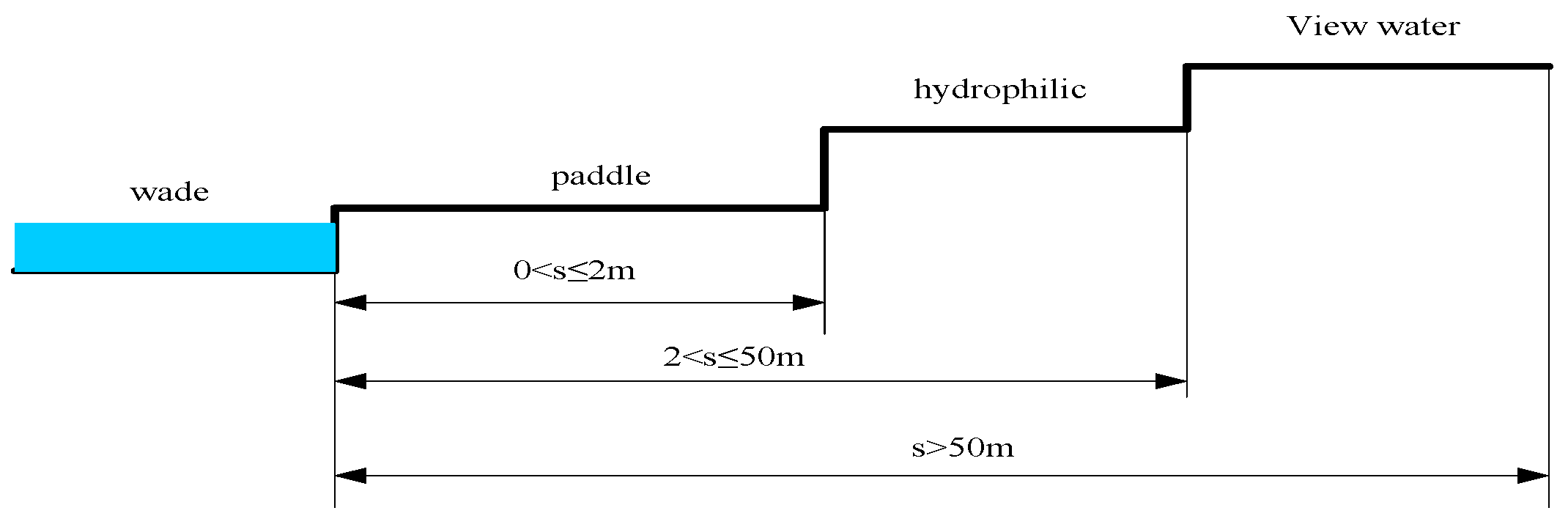

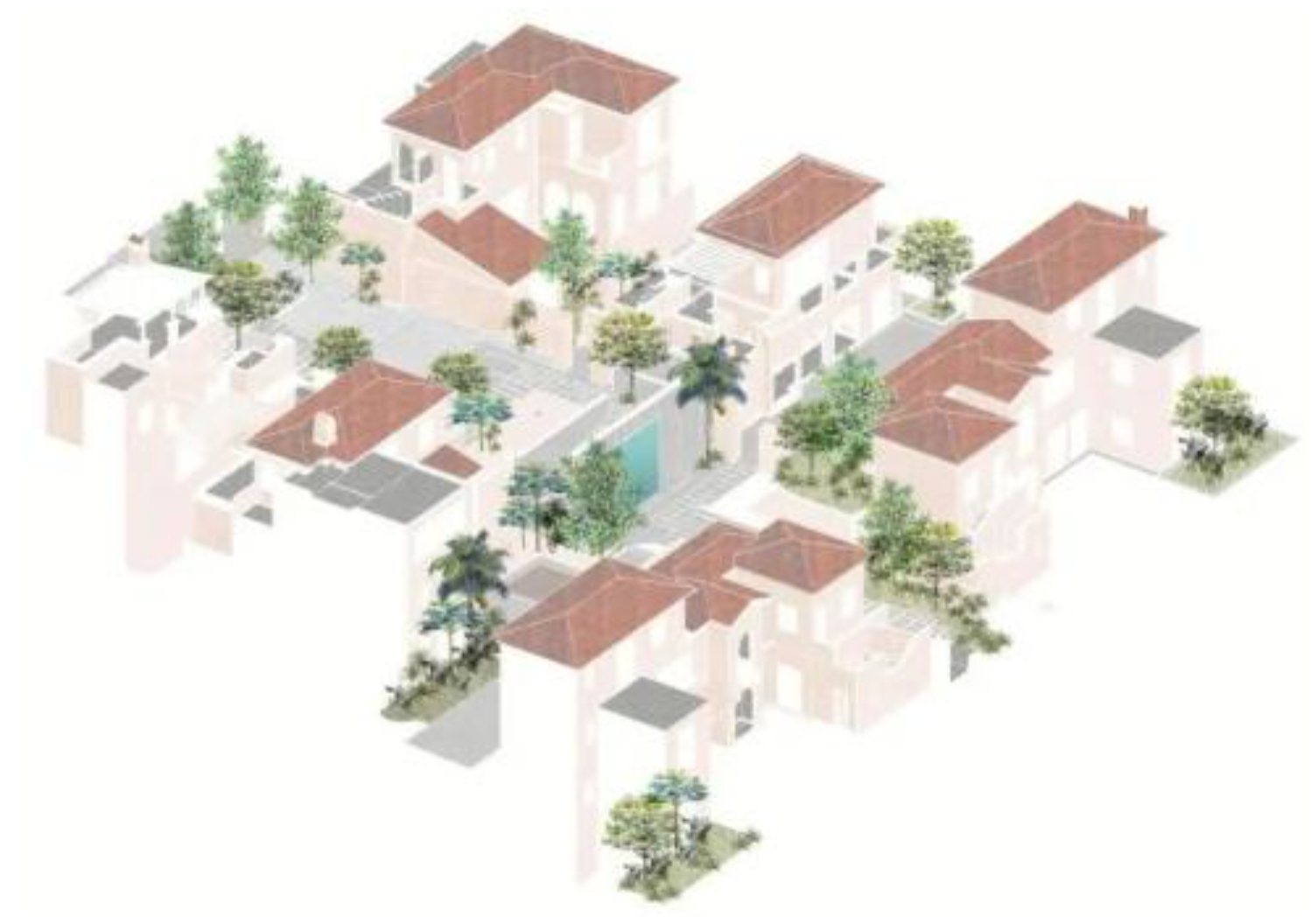


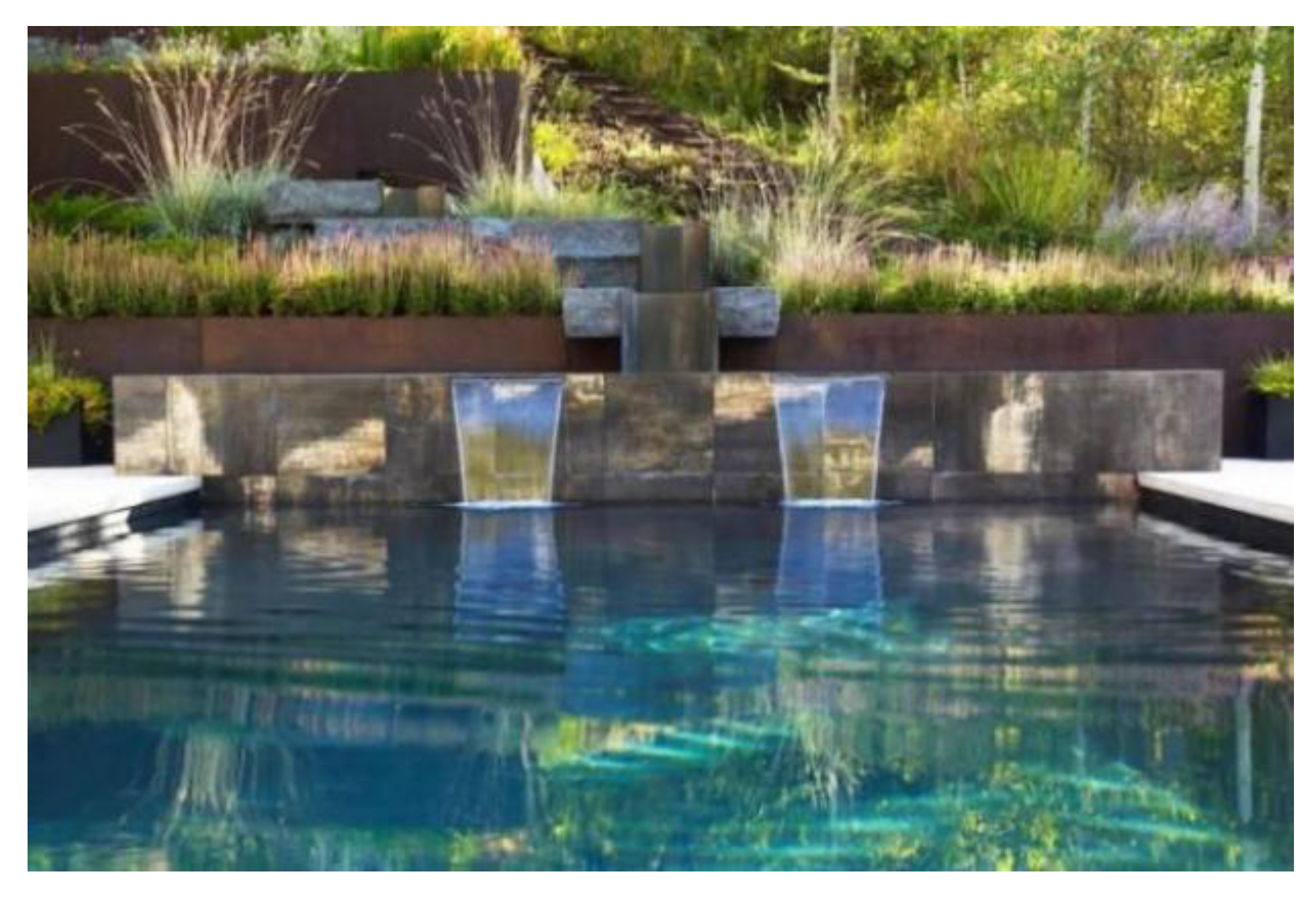
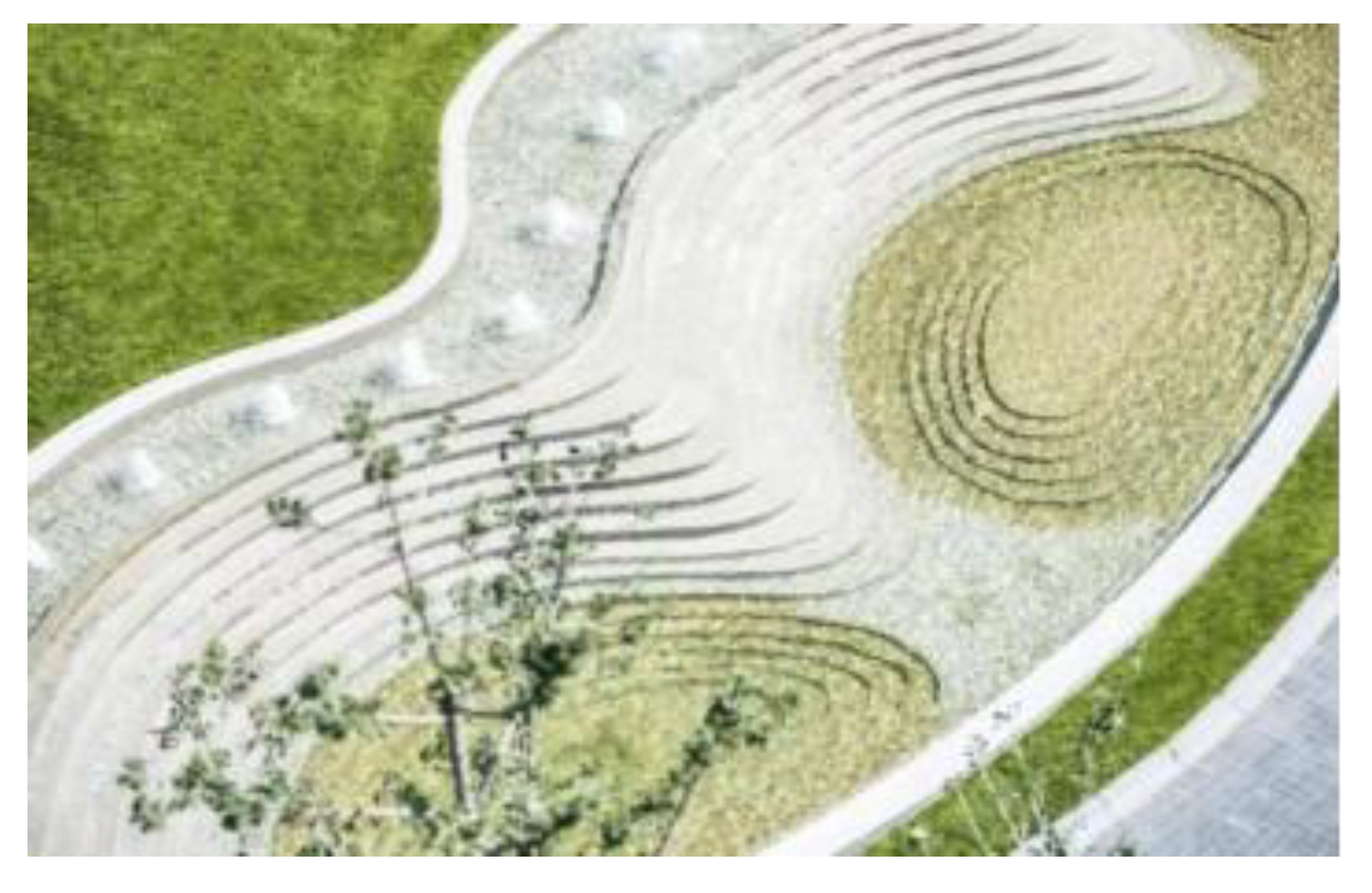
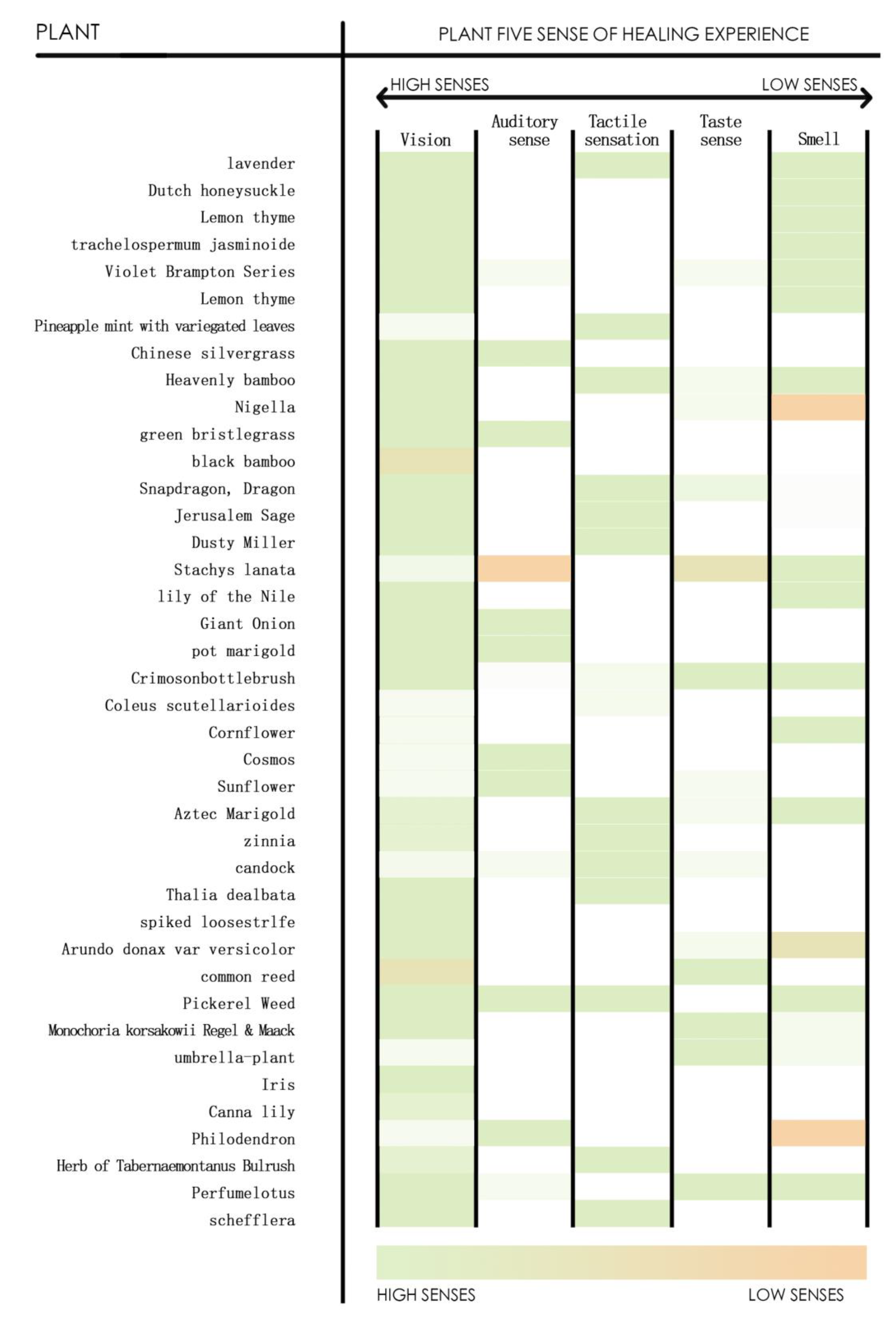
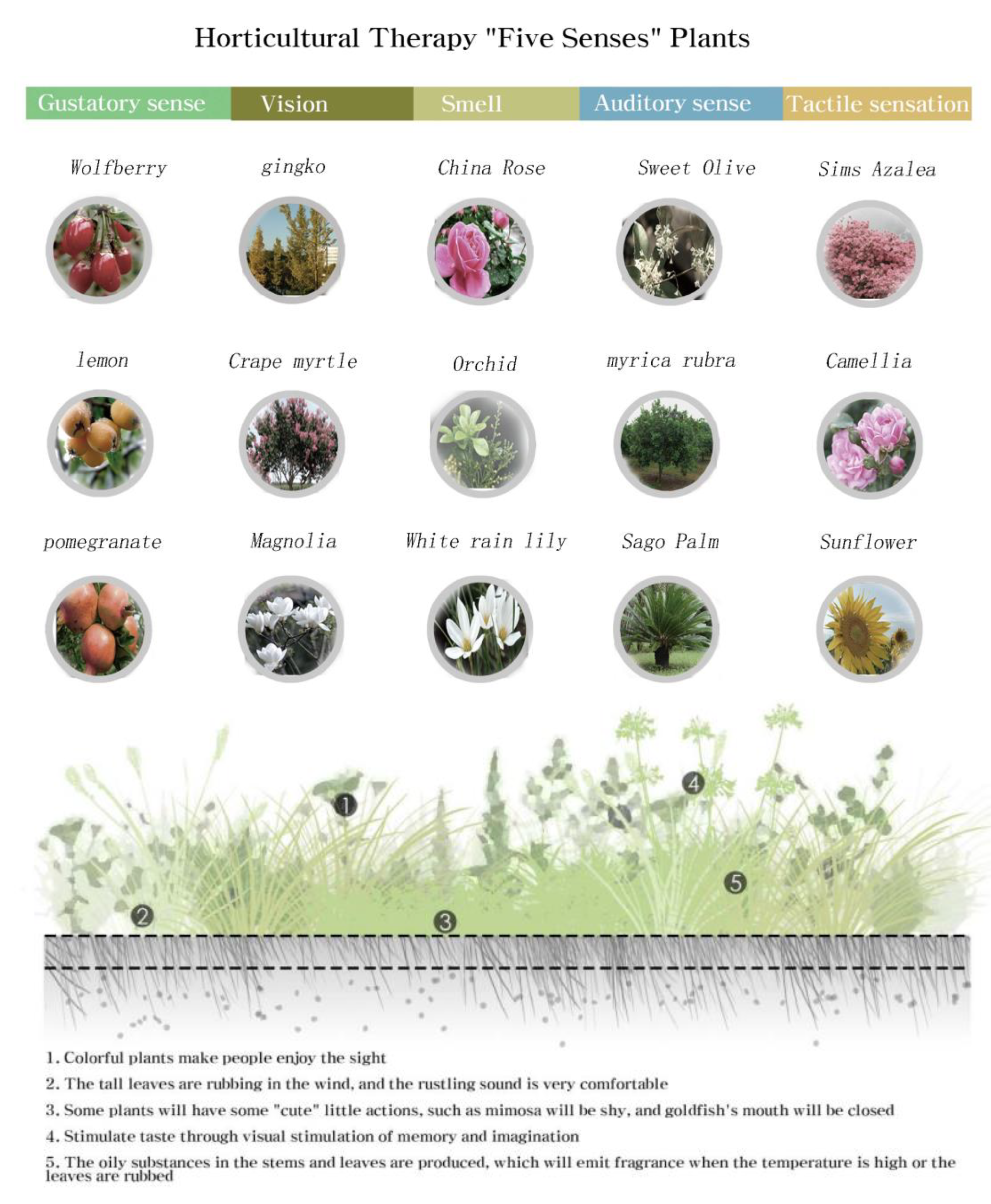
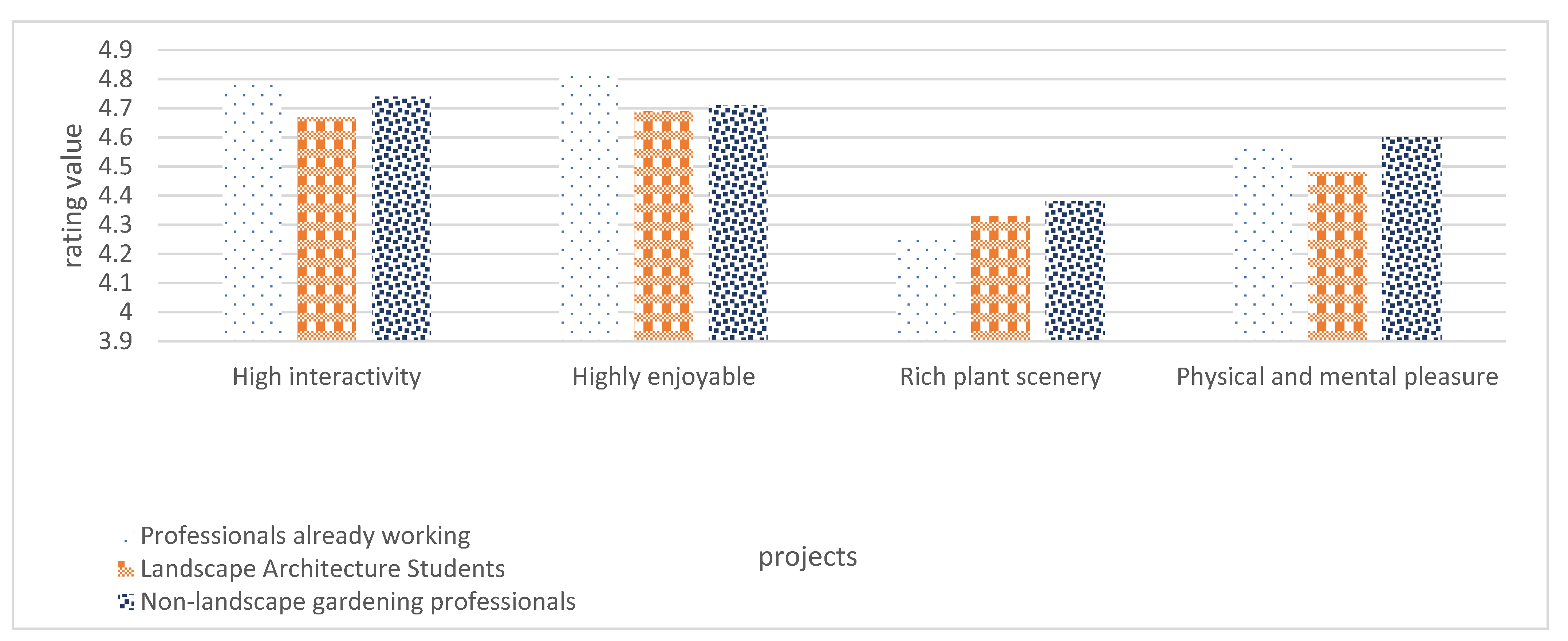
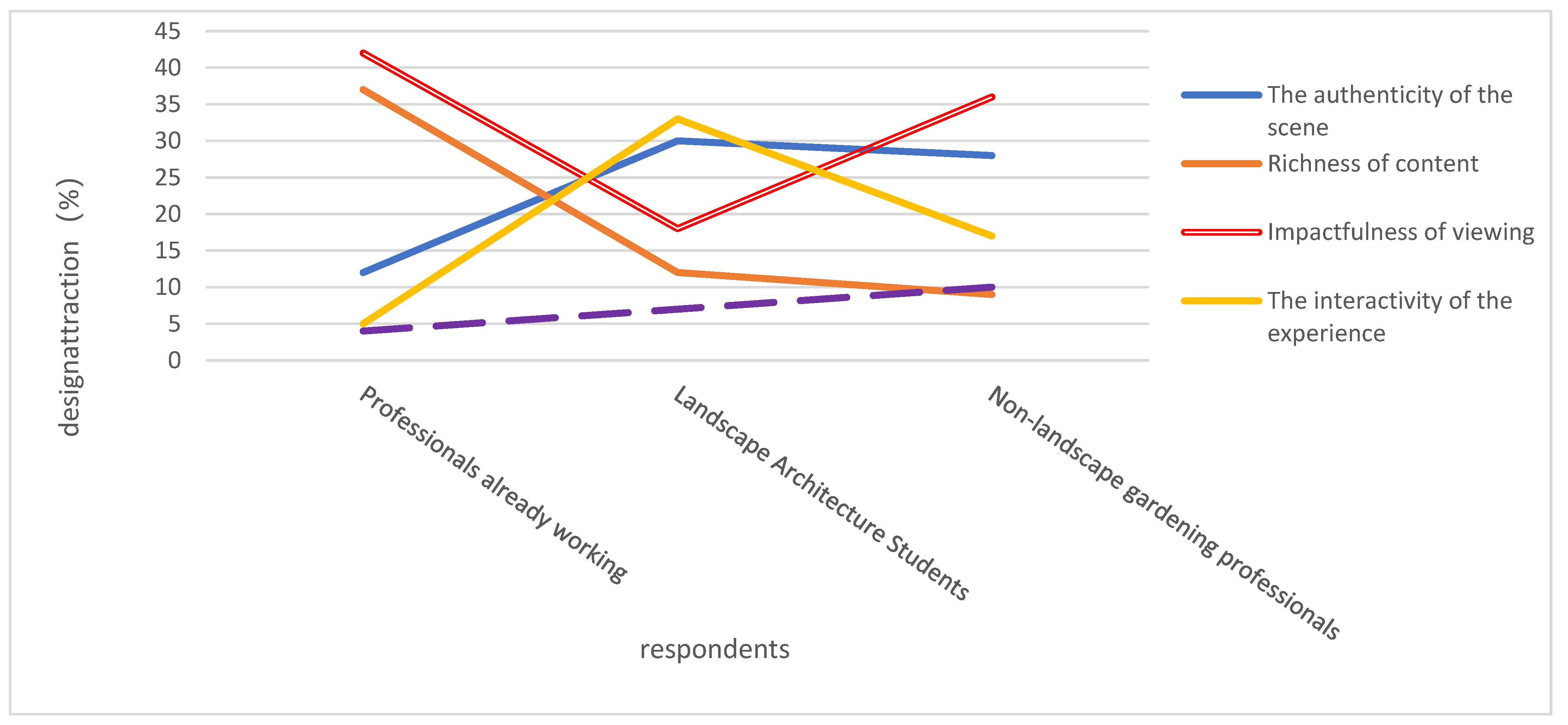
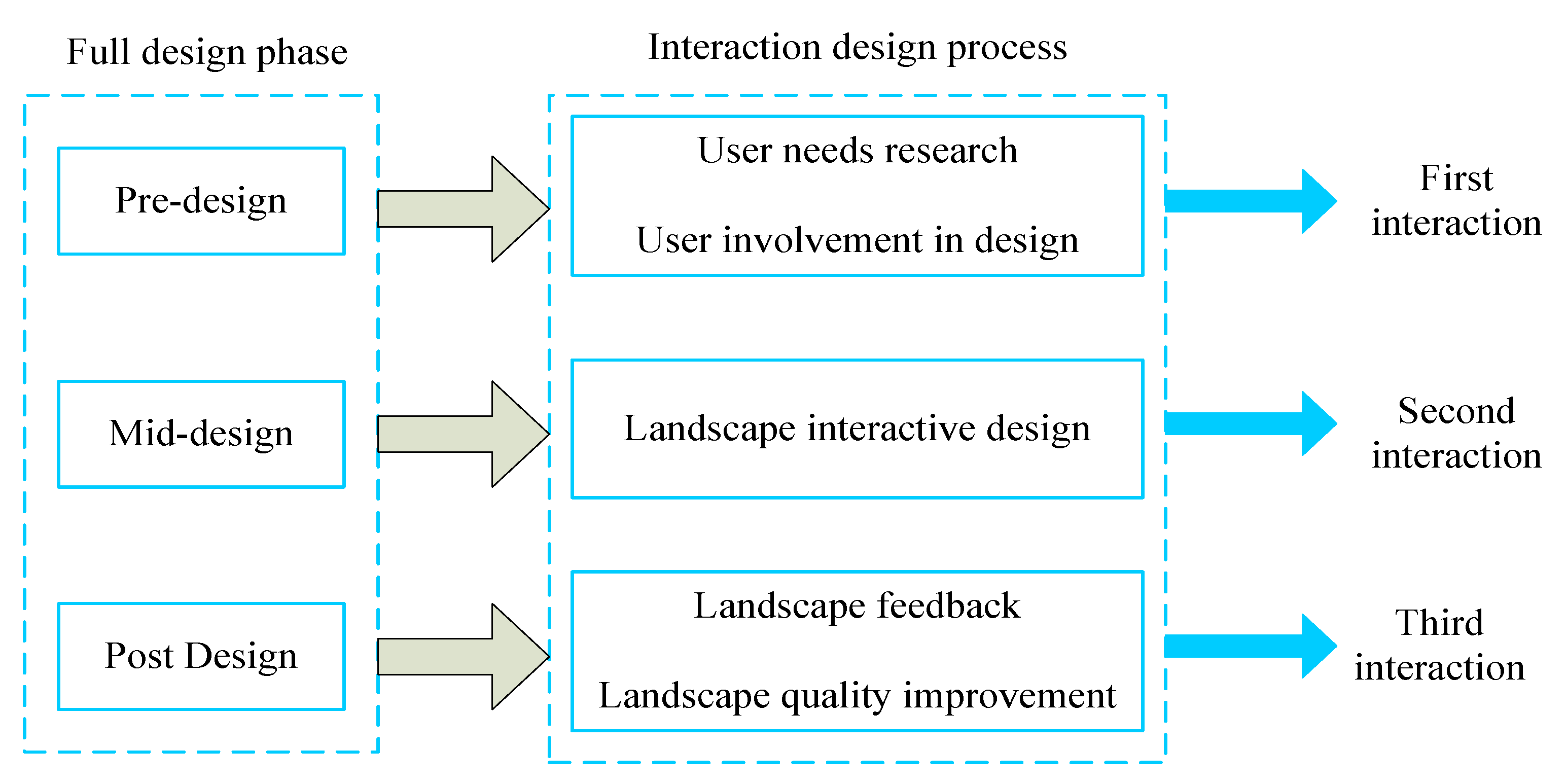

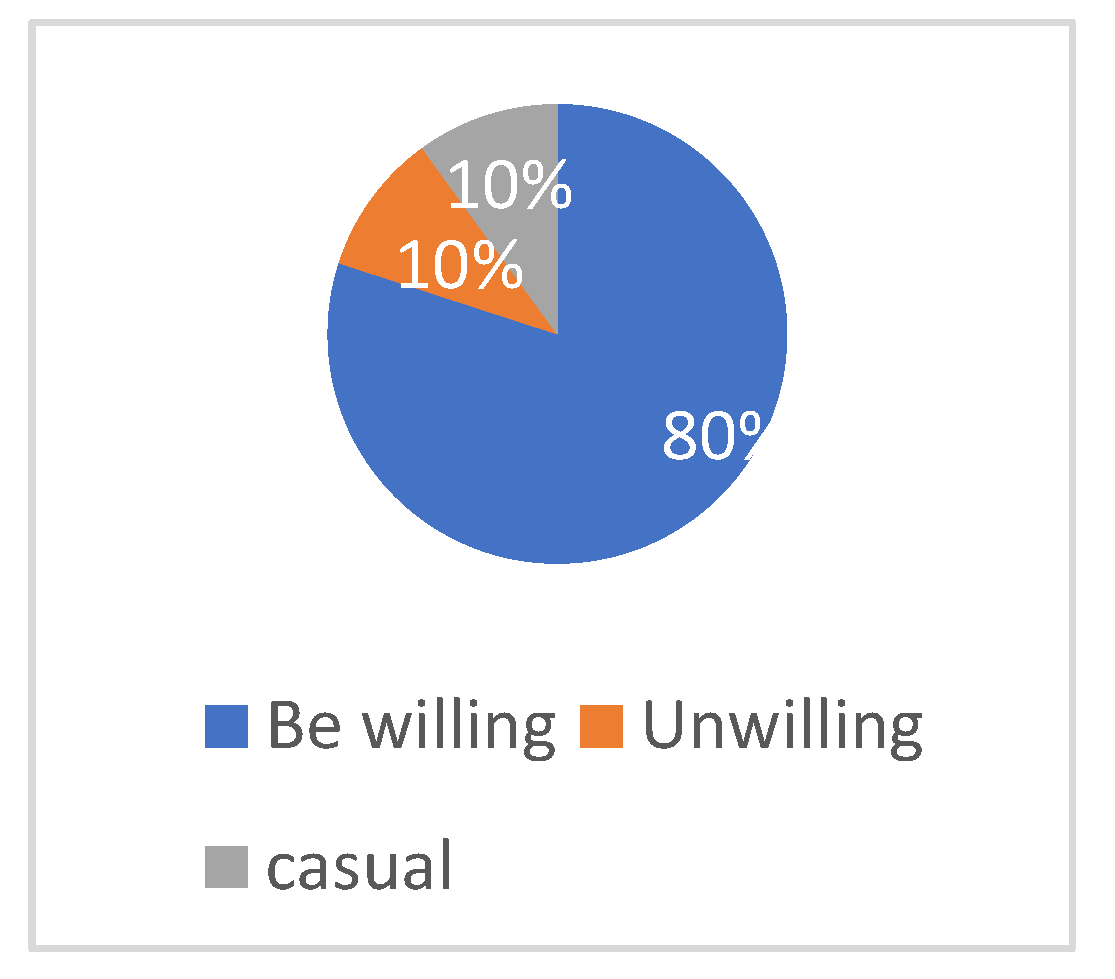
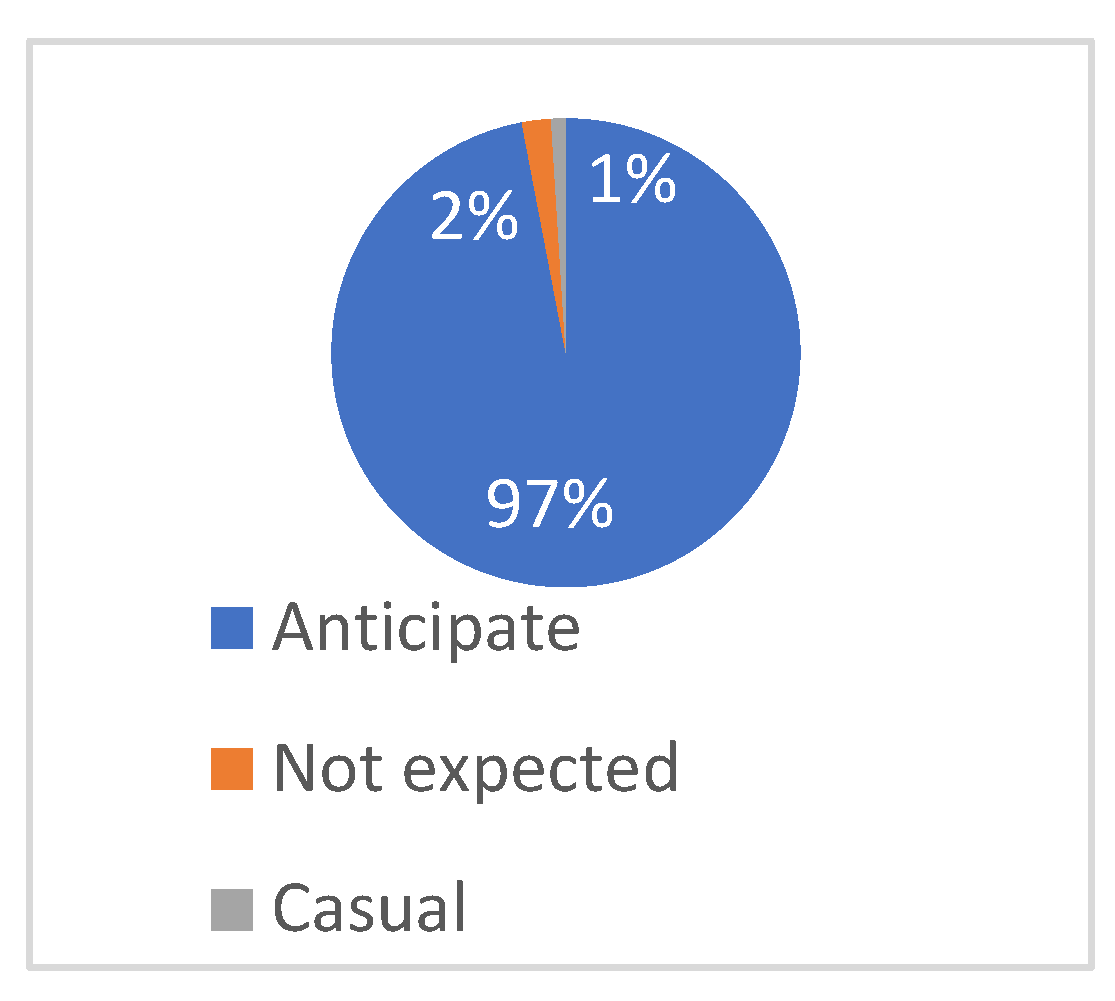
| Target Layer | Criterion Layer | First-Level Indicators | Secondary Indicators | Element Layer | Direction | Required/ Not Required |
|---|---|---|---|---|---|---|
| Marine ecological suitability | Suitability of marine ecological environment | Biological environment structure | Environmental quality | Eutrophication index | Negative indicator | ● |
| Natural shoreline integrity | Natural shoreline retention rate | Positive indicators | ● | |||
| Marine disaster risk distribution | Marine risk intensity index | Negative indicator | ○ | |||
| Community structure | Biodiversity index | Positive indicators | ● | |||
| Biological environment function | Important protection value | Ecological sensitive areas and important protected objects | Positive indicators | ● | ||
| Landscape type | Ecological disturbance degree | Negative indicator | ● | |||
| Production supply | Net primary productivity | Positive indicators | ● | |||
| Suitability of marine social environment | Current situation of space utilization | Deepwater shoreline resources | Available deep-water shoreline length | Negative indicator | ● | |
| Mudflat resources | Available mudflat area | Negative indicator | ● | |||
| Landscape cultural resources | Rating coefficient of scenic spots | Negative indicator | ○ | |||
| Suitability of marine economic environment | Socio-economic conditions | Marine economy | Total output value of marine industry | Negative indicator | ● | |
| Coastal population | Population density | Negative indicator | ● | |||
| Geographic conditions | Accessibility of important nodes | Negative indicator | ● |
| Professionals Already Working | Landscape Architecture Students | Non-Landscape Gardening Professionals | |
|---|---|---|---|
| Number of people | 20 | 50 | 30 |
| Proportion | 18% | 55% | 27% |
| Professionals Already Working | Landscape Architecture Students | Non-Landscape Gardening Professionals | |
|---|---|---|---|
| High interactivity | 4.78 | 4.67 | 4.74 |
| Highly enjoyable | 4.82 | 4.69 | 4.71 |
| Rich plant scenery | 4.26 | 4.33 | 4.38 |
| Physical and mental pleasure | 4.57 | 4.48 | 4.60 |
| Professionals Already Working | Landscape Architecture Students | Non-Landscape Gardening Professionals | |
|---|---|---|---|
| Authenticity of the scene | 12 | 30 | 28 |
| Richness of content | 37 | 12 | 9 |
| Impactfulness of viewing | 42 | 18 | 36 |
| Interactivity of the experience | 5 | 33 | 17 |
| Nothing particularly impressive | 4 | 7 | 10 |
| Target Statistics | p Value | Professionals Already Working | Landscape Architecture Students | Non-Landscape Gardening Professionals |
|---|---|---|---|---|
| Acceptance of interaction concept | p ≤ 0.001 | ● | ||
| p ≤ 0.01 | ● | |||
| p ≤ 0.05 | ● | |||
| Diagram schematic analysis | 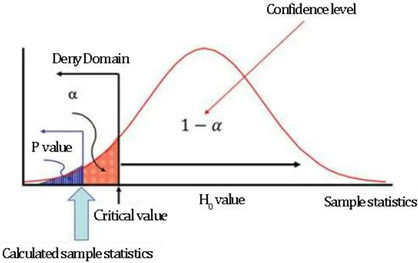 | |||
| Characteristic | Basic Content | Embodiment in Plant Landscaping of Marine Cities Based on Multimodal Interaction |
|---|---|---|
| Immersive | Multi-dimensional perception: observe the scene personally | Assisting in scheme deliberation and feeling plant landscape artistic conception: increasing the dimension of space exploration between designers and the public |
| Interactivity | Manipulate virtual reality scene: interact with the scene | Changes and contrast schemes that are conducive to designers’ feelings: save and verify the fleeting design inspiration in time. |
| Conceptual | Deepen concepts or sprout new ideas in the observation and manipulation of objects | Inspire the production of new design ideas or concepts |
Disclaimer/Publisher’s Note: The statements, opinions and data contained in all publications are solely those of the individual author(s) and contributor(s) and not of MDPI and/or the editor(s). MDPI and/or the editor(s) disclaim responsibility for any injury to people or property resulting from any ideas, methods, instructions or products referred to in the content. |
© 2023 by the authors. Licensee MDPI, Basel, Switzerland. This article is an open access article distributed under the terms and conditions of the Creative Commons Attribution (CC BY) license (https://creativecommons.org/licenses/by/4.0/).
Share and Cite
Yuan, J.; Zhang, L.; Kim, C.-S. Multimodal Interaction of MU Plant Landscape Design in Marine Urban Based on Computer Vision Technology. Plants 2023, 12, 1431. https://doi.org/10.3390/plants12071431
Yuan J, Zhang L, Kim C-S. Multimodal Interaction of MU Plant Landscape Design in Marine Urban Based on Computer Vision Technology. Plants. 2023; 12(7):1431. https://doi.org/10.3390/plants12071431
Chicago/Turabian StyleYuan, Jingwen, Longlong Zhang, and Chul-Soo Kim. 2023. "Multimodal Interaction of MU Plant Landscape Design in Marine Urban Based on Computer Vision Technology" Plants 12, no. 7: 1431. https://doi.org/10.3390/plants12071431
APA StyleYuan, J., Zhang, L., & Kim, C.-S. (2023). Multimodal Interaction of MU Plant Landscape Design in Marine Urban Based on Computer Vision Technology. Plants, 12(7), 1431. https://doi.org/10.3390/plants12071431





